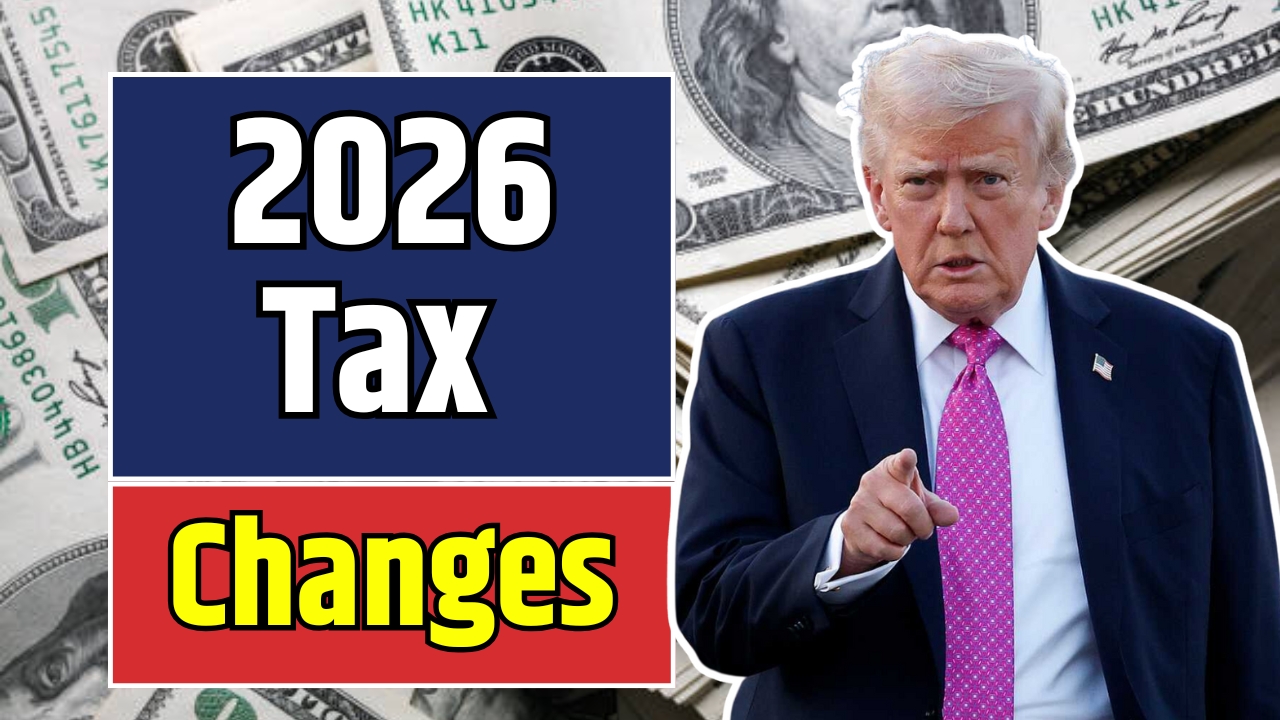Join on WhatsApp
Get the latest updates directly on WhatsApp – motivation, news & more!
The IRS 2026 inflation adjustments are now official — and older Americans are among the biggest beneficiaries. As part of its annual update to tax brackets, credits, and deductions, the Internal Revenue Service has raised key thresholds to reflect inflation, preventing taxpayers from being pushed into higher tax brackets simply due to rising prices.
But this year’s update stands out for another reason: retirees and seniors will see meaningful tax relief through expanded deductions and a continued “Senior Bonus Deduction,” which was first introduced under the 2025 federal tax reform law.
Overview: IRS 2026 Inflation Adjustments
Each year, the IRS updates tax parameters to account for inflation’s impact on income, deductions, and credits. For 2026, the goal remains the same — preserve the real value of Americans’ earnings and benefits, particularly for older taxpayers living on fixed incomes.
According to IRS officials, these new rates will apply to 2026 income tax returns filed in 2027.
The 2026 update includes:
- Higher standard deductions for all filers
- Larger additional deductions for those aged 65 or older or legally blind
- Continuation of the Senior Bonus Deduction through 2028
- Expanded phase-out thresholds for age-based deductions
These adjustments together could reduce taxable income for seniors by thousands of dollars compared to prior years.
IRS Standard Deduction Amounts for 2026
The standard deduction, which roughly 9 out of 10 taxpayers use instead of itemizing, has been increased across all filing categories. This ensures that ordinary taxpayers — including retirees — keep more of their income.
| Filing Status | 2026 Standard Deduction | Change from 2025 |
|---|---|---|
| Married Filing Jointly / Surviving Spouse | $32,200 | +$700 |
| Single / Married Filing Separately | $16,100 | +$350 |
| Head of Household | $24,150 | +$525 |
For most seniors, this will mean a modest boost in their take-home pay or refund — especially when combined with age-based and bonus deductions.
Additional Deduction for Seniors and the Visually Impaired
The Additional Standard Deduction (ASD) provides extra relief for those aged 65 or older and individuals who are legally blind. These figures rose by $50 per category for 2026.
| Category | 2026 Amount |
|---|---|
| Single or Head of Household (65 or older OR blind) | $2,050 |
| Single or Head of Household (65 or older AND blind) | $4,100 |
| Married Filing Jointly or Separately (per qualifying spouse) | $1,650 |
| Married Filing Jointly or Separately (65 or older AND blind) | $3,300 |
Example:
A married couple where both spouses are age 65+ will receive an extra $3,300 added to their standard deduction, on top of the base $32,200 amount.
These targeted increases ensure that seniors — who often face rising medical and living expenses — see meaningful relief when filing their taxes.
Senior Bonus Deduction (Extended Through 2028)
One of the biggest wins for retirees is the Senior Bonus Deduction, a $6,000 deduction introduced under the 2025 Tax Relief and Simplification Act. It was designed to help seniors maintain purchasing power amid higher retirement costs and inflation.
Key details for 2026:
| Feature | Details |
|---|---|
| Deduction Amount | $6,000 per eligible taxpayer |
| Income Phase-out | Begins at $75,000 (single) / $150,000 (joint) |
| Applicable Tax Years | 2025–2028 |
| Eligibility | Age 65 or older by Dec. 31, 2026 |
| Can Be Claimed With | Either standard or itemized deductions |
Unlike most deductions, the Senior Bonus Deduction can be claimed even if you itemize, making it a flexible and powerful benefit for retirees managing higher healthcare or housing expenses.
How the Deductions Combine
When you add up all three deduction types, the tax savings for seniors can be substantial.
| Filer Example | Standard Deduction | Additional (Age/Blind) | Senior Bonus Deduction | Total Deduction (2026) |
|---|---|---|---|---|
| Single, age 66 | $16,100 | $2,050 | $6,000 | $24,150 |
| Married couple, both 65+ | $32,200 | $3,300 | $12,000 | $47,500 |
That means a retired couple could exclude nearly $47,500 of income from federal taxation — up from roughly $46,000 in 2025 — providing more breathing room in a high-cost environment.
Eligibility and Required Documentation
To claim these benefits:
- You must turn 65 by December 31, 2026 (born on or before January 1, 1962).
- Both spouses can claim age-based and bonus deductions independently.
- For the blind deduction, you’ll need a medical statement confirming vision of 20/200 or worse in the better eye, or a visual field of 20 degrees or less.
- Once filed, blindness certification usually remains valid for future years unless the condition changes.
Tax Planning Tips for Seniors
Tax experts recommend retirees review their filing strategy annually — especially if they receive income from multiple sources like pensions, Social Security, IRAs, or investments.
Key advice includes:
- Compare standard vs. itemized deductions each year — some seniors can now benefit from both, depending on medical expenses or charitable giving.
- Manage withdrawals from retirement accounts (IRA, 401(k)) strategically to stay below the Senior Bonus Deduction phase-out thresholds.
- Keep all records of age, medical status, and income statements handy for easy filing.
- Consider tax-efficient investments and charitable distribution strategies to maintain eligibility for maximum deductions.
Expert Insight
“The expanded 2026 deduction structure is a big win for retirees,” says Lynne Harris, a certified financial planner based in Maryland.
“Between the higher standard deduction and the extended senior bonus, older taxpayers can now shelter more income — and that helps offset inflation’s bite on fixed pensions or Social Security.”
Broader Tax Context
The 2026 adjustments are part of the IRS’s annual inflationary updates, but they also align with the Federal Senior Affordability Act of 2025, which emphasized tax fairness for older Americans.
That law introduced the Senior Bonus Deduction and expanded eligibility for medical expense deductions. Together, these reforms represent the most significant tax relief for retirees since the 2017 Tax Cuts and Jobs Act.
Summary: Senior Tax Benefits for 2026
| Deduction Type | Single | Married (Both 65+) | Notes |
|---|---|---|---|
| Standard Deduction | $16,100 | $32,200 | Adjusted for inflation |
| Additional Age/Blind | $2,050 | $3,300 | Per qualifying person |
| Senior Bonus Deduction | $6,000 | $12,000 | Available even if itemizing |
| Total Potential Deduction | $24,150 | $47,500 | Combined maximum deduction |
What’s Next
The IRS will issue updated tax tables and bracket thresholds in late 2025, but the deduction structure above is now confirmed. Seniors should begin adjusting their estimated taxes and withholding early in 2026 to account for the new amounts.




